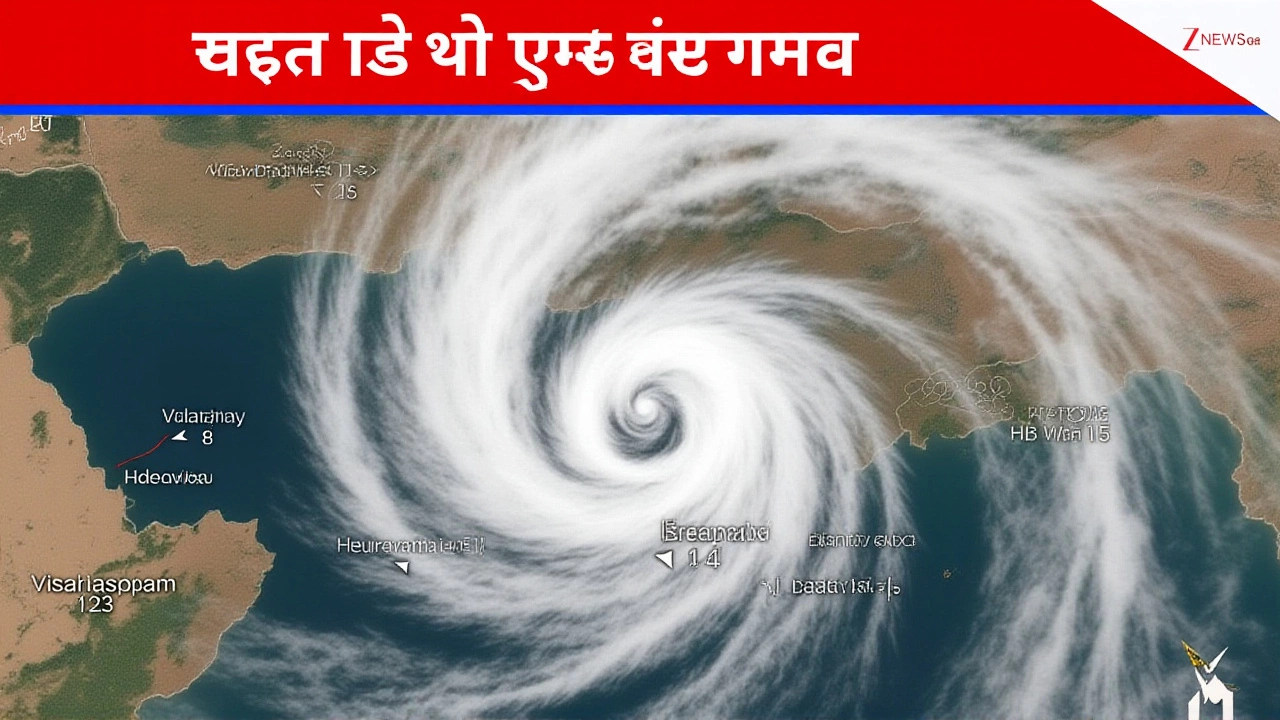India Meteorological Department: Your Guide to Weather, Climate and Alerts
When talking about the India Meteorological Department, the official agency that monitors weather, climate and natural hazards across India. Also known as IMD, it combines science, technology and public service to keep the nation informed.
The core of IMD’s work is weather forecasting, producing short‑term and long‑term predictions using ground stations, radar and computer models. These forecasts drive daily decisions for farmers, pilots and commuters. To improve accuracy, IMD leans heavily on satellite imagery, high‑resolution pictures of the Earth’s atmosphere collected by Indian and foreign satellites. The images feed into models that track monsoon fronts, cyclones and heatwaves.
How Technology Boosts Climate Monitoring and Alerts
Beyond daily forecasts, IMD runs a climate monitoring system that records long‑term trends in temperature, rainfall and sea level. This data underpins research on climate change and guides policy makers. The department also operates a network of weather radars, Doppler units that detect rainfall intensity and storm movement in real time. Radar feeds combine with satellite feeds to produce more reliable storm warnings.
When a severe event looms, IMD issues disaster alerts, timely notifications sent via SMS, TV, radio and social media to protect lives and property. These alerts rely on the same broadcasting infrastructure discussed in many of our featured posts – live streaming, audio‑visual encoding and webcasting – to reach millions within minutes. The department’s alert centre even uses OBS‑style software to overlay radar maps on live TV feeds, ensuring viewers see clear, actionable information.
Satellite imagery also supports a less‑known but vital role: monitoring air quality and dust storms that affect North India in summer. By layering aerosol data on top of cloud images, scientists can predict when visibility will drop, helping transport agencies reroute flights and trains. This crossover of meteorology and broadcast tech mirrors the content on video live streaming and broadcast equipment in our collection.
IMD’s data pipelines resemble the antenna‑building guides you’ll find here. Just as a hobbyist crafts a simple drone antenna to boost signal strength, the department designs custom ground‑based antennas for satellite communication, ensuring uninterrupted flow of weather data. The same principles of signal frequency, gain and polarization apply, whether you’re tuning a remote‑control drone or a weather satellite link.
LED lighting, another recurring topic in our posts, plays a subtle part in IMD’s field stations. Energy‑efficient LEDs power weather‑monitoring kiosks in remote villages, allowing solar‑powered sensors to run round‑the‑clock without frequent battery changes. This reduces maintenance costs and aligns with the department’s sustainability goals.
All this tech converges to make IMD’s forecasts more reliable. The agency’s workflow can be summed up in three simple steps: capture atmospheric data via radars and satellites, process the data with high‑performance computing models, and broadcast the results through webcasts, TV bulletins and mobile alerts. Each step leans on tools and techniques covered in our posts about live streaming, DMX‑controlled lighting for event broadcasts, and broadcast equipment trends.
If you’re curious about how a monsoon prediction is turned into a city‑wide warning, the articles below break down each piece of the puzzle. From building a DIY antenna to understanding how OBS streams live video, you’ll see the practical side of the science that IMD uses every day.
Ready to dive into the specifics? Below you’ll find a curated list of guides, tutorials and deep‑dives that show the technology behind weather forecasts, satellite links, climate data processing and disaster alert broadcasting. Each post adds a layer to the bigger picture of how the India Meteorological Department keeps the country prepared for whatever the sky throws at us.

Cyclone Montha Slams Andhra Coast, Wipes Out 43,000 Hectares of Crops
Cyclone Montha struck Andhra Pradesh on October 28, 2025, killing one person and destroying 43,000 hectares of crops. Thanks to precise forecasts by the India Meteorological Department, mass evacuations minimized casualties despite severe damage.

IMD Issues Yellow Alert for 11 Jharkhand Districts Amid Heavy Rainfall
IMD's Ranchi Weather Center issued a yellow alert for 11 Jharkhand districts on Oct 6, 2025, warning heavy rain, thunderstorms and lightning, with safety tips for residents and farmers.
-
6.10.25 -
Maverick Renfield -
0
- Science (3)
- Technology and Media (2)
- Sports (2)
- Video Streaming Technology (1)
- Industrial Lighting Applications (1)
- Video Production Tutorials (1)
- Film Production Equipment and Resources (1)
- Drone Technology & DIY Projects (1)
- Stage Lighting and Equipment Guides (1)
- Online Video Streaming Guides (1)
-
How to play other videos while I'm live streaming on YouTube?
31 Jul 2023 -
Chelsea Beats PSG 3-0 to Crown First Expanded Club World Cup
20 Oct 2025 -
Cyclone Montha Heads for Andhra Pradesh Landfall: 110 km/h Winds, Widespread Flooding Expected
28 Oct 2025 -
How does living in Shanghai compare to living in Hong Kong?
16 Jan 2023 -
How does video live streaming work?
29 Mar 2023

24.11.25
Maverick Renfield
0